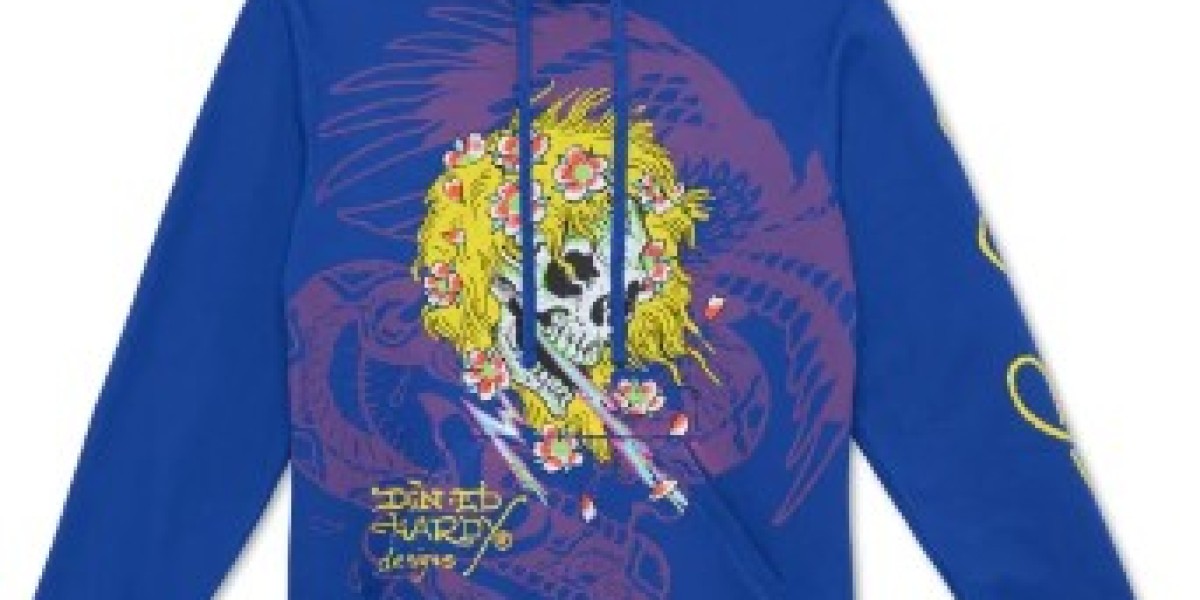Ed Hardy is a name that resonates with both art enthusiasts and fashion lovers alike. This brand, which became synonymous with bold, vibrant designs and a rebellious spirit, has its roots deeply embedded in the world of tattoo artistry. The transition from canvas to clothing was not just a commercial venture but a cultural movement that redefined the boundaries of fashion and art. This article delves into the journey of Ed Hardy, exploring how the brand evolved from the intricate tattoo designs of Don Ed Hardy to becoming a global fashion phenomenon. We will examine the artistic influences, the creative process, and the cultural impact of Ed Hardy's work, tracing the path from canvas to clothing.
The Origins of Don Ed Hardy: A Tattoo Artist’s Journey
Don ed hardy jeans the man behind the iconic brand, began his journey as a tattoo artist long before his name became synonymous with fashion. Born in 1945 in Southern California, Hardy was fascinated by tattoo art from a young age. He was particularly drawn to the bold lines and vibrant colors of traditional American tattoos. After studying fine arts at the San Francisco Art Institute, Hardy embarked on a journey that would take him to Japan, where he studied under the legendary tattoo master Horihide. This experience profoundly influenced Hardy’s artistic style, blending the intricate detail of Japanese tattoo art with the bold, graphic elements of American designs. Hardy’s work soon became recognized for its unique fusion of these two traditions, and he quickly gained a reputation as one of the most talented tattoo artists of his generation.
The Transition to Fashion: Christian Audigier’s Vision
The transition from tattoo art to fashion came about when French fashion designer Christian Audigier approached Don Ed Hardy with a proposition. Audigier, who had previously worked with brands like Von Dutch, saw the potential in Hardy’s tattoo designs to make a statement in the fashion world. In 2002, Audigier proposed licensing Hardy’s artwork for a new clothing line. Hardy, who had always been reluctant to commercialize his art, was initially hesitant. However, Audigier’s vision of bringing tattoo culture to mainstream fashion convinced Hardy to take the leap. Thus, the Ed Hardy brand was born, with Audigier as the driving force behind its commercial success.
The Artistic Influences: East Meets West
One of the defining features of Ed Hardy’s art is its unique blend of Eastern and Western influences. Hardy’s time in Japan had a profound impact on his work, introducing him to the intricacies of Japanese tattoo art. This influence is evident in the use of traditional Japanese motifs such as dragons, koi fish, and cherry blossoms, which are often depicted with a sense of fluidity and movement. At the same time, Hardy’s work retains the bold, graphic quality of traditional American tattoo art, characterized by thick lines, vibrant colors, and iconic imagery such as skulls, hearts, and eagles. This fusion of East and West became the hallmark of Hardy’s designs, setting them apart from anything else in the fashion world at the time.
The Creative Process: From Tattoo to Textile
The process of translating Hardy’s tattoo art from skin to fabric was a complex one, requiring a deep understanding of both mediums. Tattooing is a highly detailed and precise art form, with each line and color meticulously applied to the skin. When these designs were transferred to clothing, maintaining the integrity and impact of the original artwork was crucial. Hardy and Audigier worked closely to ensure that the clothing line captured the essence of Hardy’s tattoo art. This involved using high-quality fabrics and printing techniques that could replicate the bold colors and intricate details of the tattoos. The result was a clothing line that not only featured stunning artwork but also retained the rebellious, edgy spirit of the original tattoos.
The Rise of Ed Hardy: A Fashion Revolution
When ed hardy sweatsuit clothing first hit the market, it quickly became a sensation. The brand’s bold designs and unique fusion of art and fashion struck a chord with a generation looking for something different. Ed Hardy was more than just a clothing brand; it was a statement of individuality and non-conformity. The clothing featured iconic tattoo designs, from roaring tigers and coiled serpents to sacred hearts and flaming skulls, each piece telling its own story. The brand’s rise to fame was also fueled by its association with celebrities, who were often seen sporting Ed Hardy designs. This celebrity endorsement helped to elevate the brand’s status and cement its place in the cultural zeitgeist of the early 2000s.
The Cultural Impact: Redefining Fashion and Art
Ed Hardy’s impact on fashion and culture goes beyond its commercial success. The brand played a significant role in redefining the relationship between fashion and art, challenging traditional notions of what could be considered high fashion. By bringing tattoo art into the mainstream, Ed Hardy blurred the lines between different forms of artistic expression. The brand’s success also paved the way for other designers to explore the intersection of art and fashion, leading to a broader acceptance of unconventional and avant-garde designs in the fashion industry. Ed Hardy’s influence can be seen in the continued popularity of tattoo-inspired fashion and the ongoing trend of merging art with clothing.
The Expansion of the Brand: Beyond Clothing
As Ed Hardy’s popularity grew, so did the brand’s offerings. What began as a clothing line soon expanded into a full lifestyle brand, encompassing a wide range of products. In addition to clothing, the Ed Hardy brand began producing accessories, fragrances, and even home decor. Each product line was infused with the same bold, artistic spirit that defined the clothing, ensuring that the brand’s identity remained consistent across all its offerings. This expansion not only helped to broaden Ed Hardy’s appeal but also solidified its position as a cultural icon. The brand’s ability to maintain its artistic integrity while expanding into new markets was a testament to the strength of its vision and the enduring appeal of its designs.
The Peak and Decline: When Success Becomes Overexposure
Like many fashion brands that experience rapid success, Ed Hardy eventually faced the challenge of overexposure. As the brand became more ubiquitous, its once-unique designs began to lose some of their appeal. The widespread availability of Ed Hardy products, combined with a saturation of the market, led to a decline in the brand’s popularity. By the late 2000s, Ed Hardy was facing criticism for being too commercialized, and its association with certain celebrities led to a shift in public perception. What was once seen as edgy and cool began to be viewed as gaudy and over-the-top. This decline in popularity was a stark contrast to the brand’s meteoric rise and served as a reminder of the fickle nature of fashion trends.
The Legacy of Ed Hardy: An Enduring Influence
Despite the challenges the brand faced, the legacy of Ed Hardy remains strong. Don Ed Hardy’s influence on both the tattoo and fashion industries is undeniable. He helped to elevate tattoo art to a respected art form and brought it into the mainstream in a way that had never been done before. The Ed Hardy brand also played a crucial role in changing the way people think about fashion, challenging the boundaries between art and clothing. Even as the brand’s popularity waned, its impact on the fashion world continued to be felt. Today, Ed Hardy’s designs are recognized as iconic, and the brand’s influence can be seen in the ongoing trend of tattoo-inspired fashion.
The Resurgence of Ed Hardy: A New Generation Discovers the Brand
In recent years, there has been a resurgence of interest in Ed Hardy, driven by a combination of nostalgia and a renewed appreciation for the brand’s bold designs. The Y2K aesthetic, characterized by the eclectic and experimental fashion of the late 1990s and early 2000s, has made a comeback, and with it, Ed Hardy has re-entered the cultural conversation. Vintage Ed Hardy pieces have become highly sought after, with collectors and fashion enthusiasts scouring thrift stores and online marketplaces for original items. The brand has also made a comeback with new collections that pay homage to its roots while appealing to modern tastes. This resurgence is a testament to the enduring appeal of Ed Hardy’s designs and the lasting impact of the brand on both fashion and culture.
The journey of Ed Hardy from canvas to clothing is a story of artistic innovation, cultural influence, and the power of creativity. Don Ed Hardy’s unique vision and artistic talent, combined with Christian Audigier’s business acumen, transformed a niche art form into a global fashion phenomenon. The brand’s impact on both the tattoo and fashion industries is profound, and its legacy continues to inspire new generations of artists and designers. Ed Hardy’s story is a reminder of the potential for art to transcend traditional boundaries and shape the world in unexpected ways. As the brand continues to evolve and adapt to changing fashion trends, its influence on the cultural landscape remains as strong as ever.








